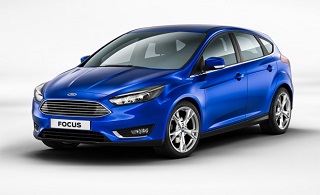From Guest Blogger Jon Wade: How Will the EU’s 2030 Emission Goals Affect Road Transportation?

The latest EU goals aim for an ever greater reduction in CO2 emissions from road vehicles. Will diesel trucks still be viable options in 2030?
Cutting CO2 emissions is one of the biggest EU talking points, and rightly so. It is something that affects every one of us, and indeed the generations to come. The European Commission has ambitious targets for overall emissions by 2021, but the Clean Mobility Package unveiled in November aims for a further 30 percent reduction by 2030.
Meeting this target could change the face of road transportation as we know it, particularly in the area of European road freight services. In the year ending September 2017, over three million road goods vehicles travelled from the UK to mainland Europe, and this is a figure that is rising year on year.
The future of European freight
Despite concerns over Brexit, trade with the EU can be expected to continue very much as it has ever done over the coming years. A consistently reliable road network across mainland Europe coupled with competitive rates for groupage shipments makes road freight the natural choice for those trading with EU partners.
The only potential alternative is by rail, but as numerous reports have highlighted, the infrastructure is already stretched to breaking point and is simply inadequate to provide any sort of viable alternative. This summer’s debacle when a landslide rendered one of the main European rail arteries completely unusable for weeks was a perfect example of just how inadequate the system really is.
Tomorrow’s road fleets
Clearly, road haulage is here to stay and forms a vital component of the national and European economy. So the real question is how it will adapt to meet the 2030 emission goals. It might seem a long way off, but with many HGVs remaining in service for well over ten years, particularly in Eastern Europe, some of the trucks rolling off the production line today will still be on the road in 2030. The Clean Mobility Package is something that manufacturers need to be thinking about right now.
Rudolf Diesel would not recognise today’s versions of his 1897 invention. You could say the same for many things, of course, particularly in the automotive industry, but the point with diesel engines is that the biggest advances have happened over the past 20 years. As recently as the early 1990s, engines were mechanically controlled systems with only basic sensors to alert the driver to serious problems. Today’s electronically controlled engines have 30 or more sensors that monitor and control operation. Emissions have reduced drastically – but have they reduced enough?
Is the future electric?
The EC claims to be “technologically neutral,” but it is hard to see how the latest targets can imply anything other than a shift to electric. We are already seeing a growing number of hybrid and electric vehicles in the passenger market. Will electric HGVs follow?
It seems inevitable that this is the way the technology is heading. Tesla has already announced an electric HGV tractor unit for next year, and has a bursting order book. As the technology continues to improve, there will come a point when electric becomes the most cost-effective choice. And when that happens, expect hauliers to convert in their droves and a silence to descend upon the roads of Europe.

Electric road haulage looks very attractive economically as of around 2019/20, however it is hard to see any manufacturer able to build full electric trucks and buses in high volumes on that time scale. A possible option might be LPG fuel cell electric hybrids with smaller batteries for acceleration and hills, whilst the fuel cells provide enough power for straight and level. This would give around 50% fuel to electricity with sufficient useable heat to warm the cab. Lower emissions and higher efficiency than an engine with less maintenance. True, such fuel cells are also not in mass production but the technology is very nearly ready, and could scale very fast once a few more improvements are achieved.